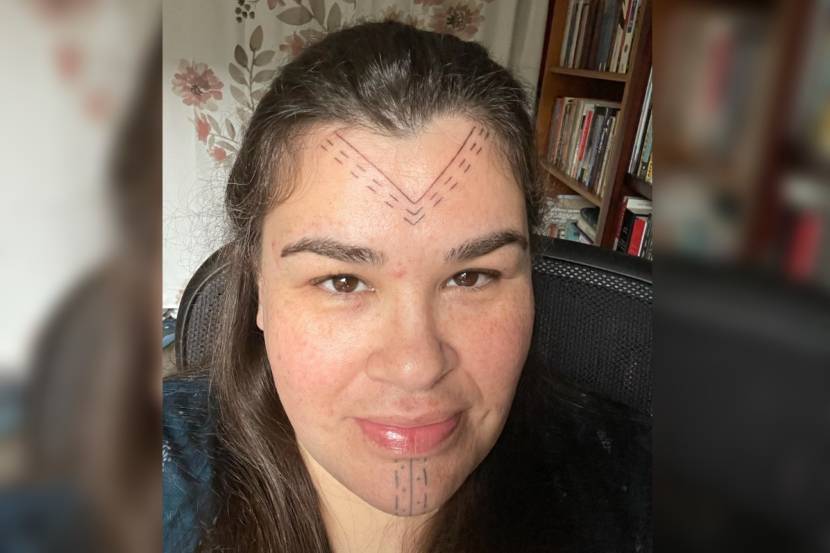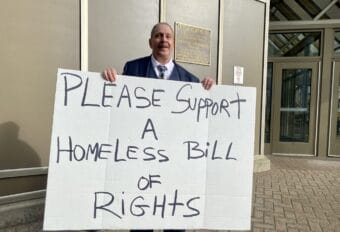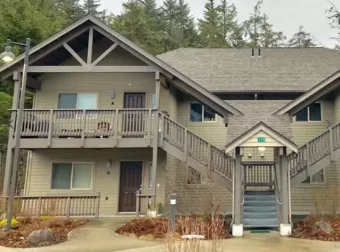
Natasha Aġnaŋuluuraq Gamache is a 40-year-old mother of four. In September, her landlord told her he was raising her rent.
“I thought, ‘Crap, I’m gonna have to move,’” she said.
She said the increase was a few hundred bucks, and her federal housing assistance limited what she could afford. Anything over her voucher, and she’d be paying out of pocket. With a fixed income from federal disability benefits, there wasn’t much she could do. And when she tried to find a new place, she said, she realized her options were limited.
“You go on Facebook marketplace, try and find a place that meets that housing payment standard where you’re paying all your rent and your utilities at $1,850 a month for a three bedroom in Anchorage,” she said. “You can find them, but you’re gonna run into some issues.”
Data suggests that Gamache’s experience is becoming more common. Vacancy rates across the state declined sharply during the pandemic, according to a state report from September.
Rob Kreiger, an economist who wrote the report, said the drop in vacancy rates could be because fewer people are moving from place to place due to an eviction moratorium that was in effect until September.
“Normally, you’d have people constantly coming and going and moving from one place to the next and you have more units becoming available than normal,” he said. “But I think in the case of the pandemic, you had a lot less people moving around.”
The Alaska Housing Finance Corporation also gave out nearly $175 million in federal rental relief since the pandemic started, though the program required that applicants show they were impacted by the pandemic. The corporation says it’s helped keep 57,000 people housed.
But for people who have lost housing, the low vacancy rate means there are few options.
“If there’s not that much available, it’s gonna be that much harder to find a place,” said Kreiger.
Gamache said she and her family bounced around AirBnBs, relying on donated money for a few weeks before settling into a shelter. This week, they finally moved into housing thanks to a tribal voucher. She said she had to give up her federal voucher to participate in the tribal program.
Before moving into housing, Gamache and her family spent weeks at Safe Harbor, a family shelter run by RuralCAP. Shelter providers say the housing market means that their efforts to move people into permanent housing are slowing down.
At a Wednesday Anchorage Assembly committee meeting, Terria Ware, an administrator at the Anchorage Coalition to End Homelessness, testified that vacancy rates are likely to force clients to stay in shelters longer than in previous months despite a massive rehousing effort.
“If you’re someone on Social Security or disability benefits, you’re getting about $1,100 a month. If your apartment is $950, and you still have to pay electric, how can you afford that unit?,” she said in a phone interview on Wednesday.
That means the city’s shelters, which are already over capacity, could keep filling up. Ware said the only solution is the slowest and most difficult one.
“If we want to truly solve homelessness in Anchorage we need more units,” she said. “We need more affordable units.”
There is some good news, she said: During the pandemic, the state was able to keep some renters in their homes thanks to quick disbursement of federal rental relief money. But not all renters qualified. Gamache said she didn’t apply for the money because her rent increase wasn’t directly tied to the pandemic.
The federal eviction moratorium kept tenants from getting kicked out until September, when it was struck down by a federal court.
“We all expected an eviction tsunami when the moratorium ended, and it hasn’t really happened,” said Helen Renfrew, who studies evictions for the Anchorage Coalition to End Homelessness.
She said avoiding a surge of evictions is a good thing, but there’s a dark side to it.
“The reason that eviction filings didn’t explode is because evictions have been occurring this whole time. They never stopped,” she said. “We had eviction filings every single week, all across the state throughout the entire moratorium.”
Renfrew said there’s not good data on it, but she suspects it’s because landlords and tenants weren’t aware of the protections.
Gamache said all of the uncertainty in the rental market exhausted her family, which has had to move six times in the last five years. After researching costs of rentals and mortgages, she decided the only way she could find housing security was to buy a house.
Her 14-year-old daughter set up a GoFundMe to raise money for a down payment on a house. So far she’s raised more than $13,000.
“It’s hard on me because I just want to be a kid,” Denali Gamache wrote on the fundraiser page. “I don’t want to feel unsafe in a shelter where people fight and get drunk and beat on doors all night.”
For Natasha Gamache, it’s a bittersweet feeling. She’s thankful for the support but also said it’s a sad statement on the state’s priorities.
“I felt I had so much shame and guilt. But at the same time, I’m so very grateful. Because, sadly, that is where we’re at,” said Gamache. “This is where we’re at.”



